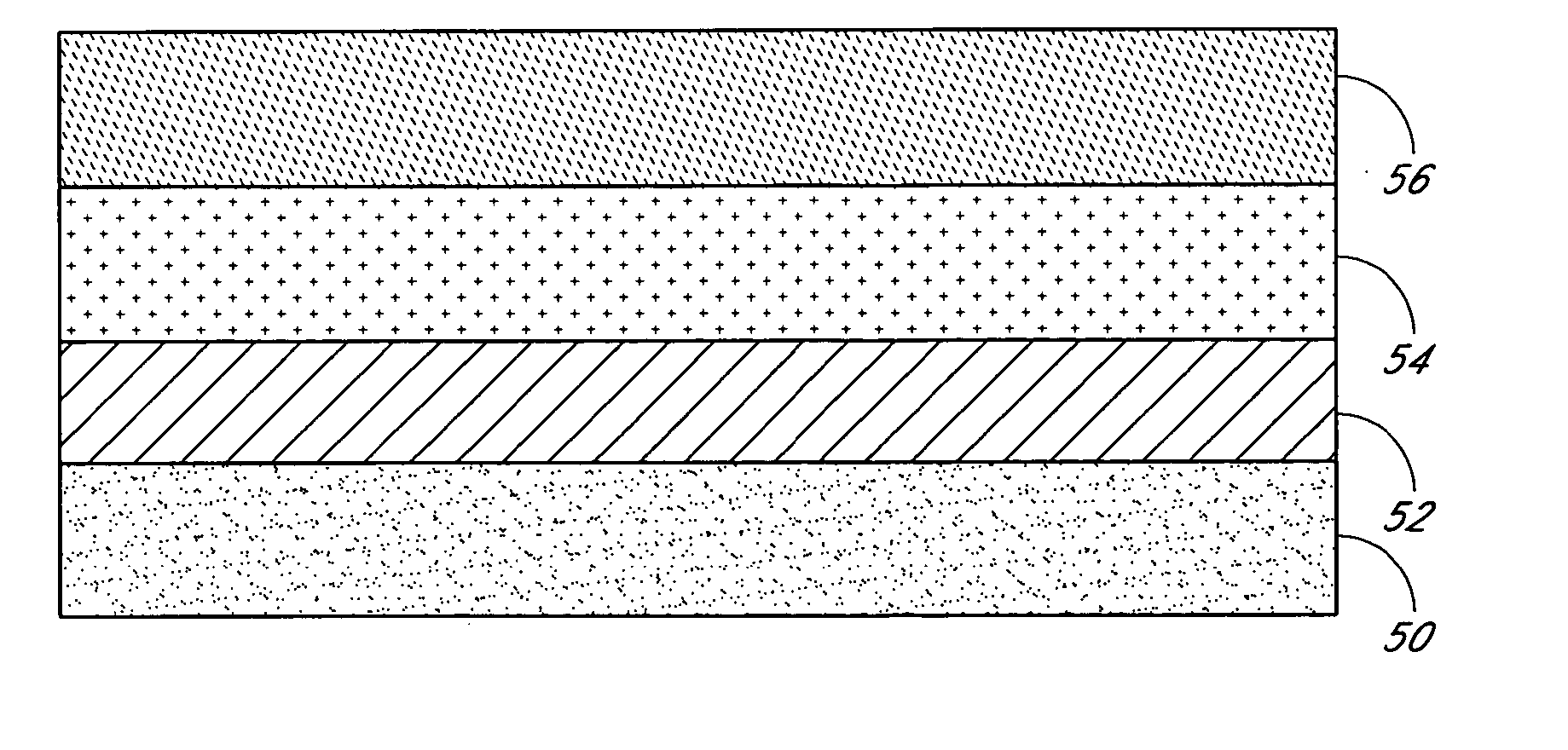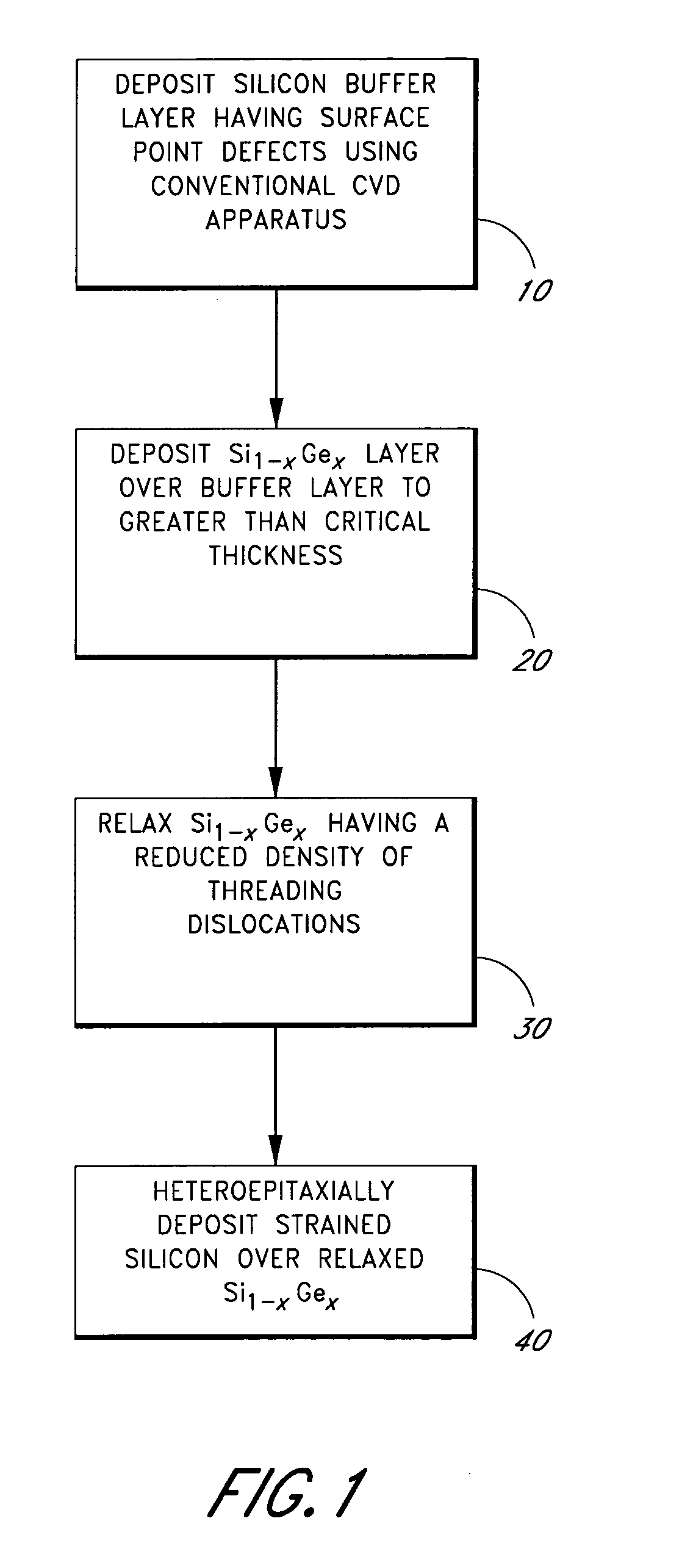Epitaxial growth of relaxed silicon germanium layers
a technology of silicon germanium and relaxed growth, applied in the direction of crystal growth process, polycrystalline material growth, chemically reactive gas growth, etc., can solve problems such as adversely affecting device operation
- Summary
- Abstract
- Description
- Claims
- Application Information
AI Technical Summary
Benefits of technology
Problems solved by technology
Method used
Image
Examples
Embodiment Construction
[0025] As used herein, the terms “single-crystal” and “epitaxial” are used to describe a predominantly large crystal structure that may have a tolerable number of faults therein. Crystallinity of a layer generally falls along a continuum from amorphous to polycrystalline to single-crystal, and therefore a crystal structure is often considered single-crystal or epitaxial notwithstanding a low density of faults. The term “epitaxy” refers to deposition where the deposited layer serves as an extension of the crystal structure of an underlying layer. “Heteroepitaxy” is a species of epitaxy in which the underlying layer and the overlying deposited layer are of different materials.
[0026] As described above, as the thickness of a strained silicon germanium layer increases beyond the critical thickness, defects in the crystal structure of the strained silicon germanium layer appear, thus leading to relaxation of the strained layer. Such defects can include threading dislocations. Generally,...
PUM
 Login to View More
Login to View More Abstract
Description
Claims
Application Information
 Login to View More
Login to View More - R&D
- Intellectual Property
- Life Sciences
- Materials
- Tech Scout
- Unparalleled Data Quality
- Higher Quality Content
- 60% Fewer Hallucinations
Browse by: Latest US Patents, China's latest patents, Technical Efficacy Thesaurus, Application Domain, Technology Topic, Popular Technical Reports.
© 2025 PatSnap. All rights reserved.Legal|Privacy policy|Modern Slavery Act Transparency Statement|Sitemap|About US| Contact US: help@patsnap.com



